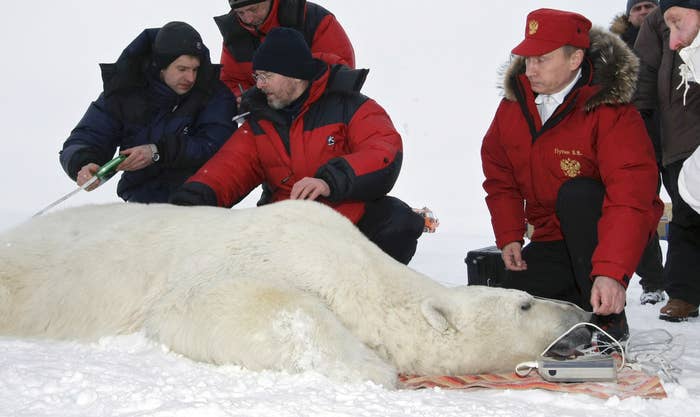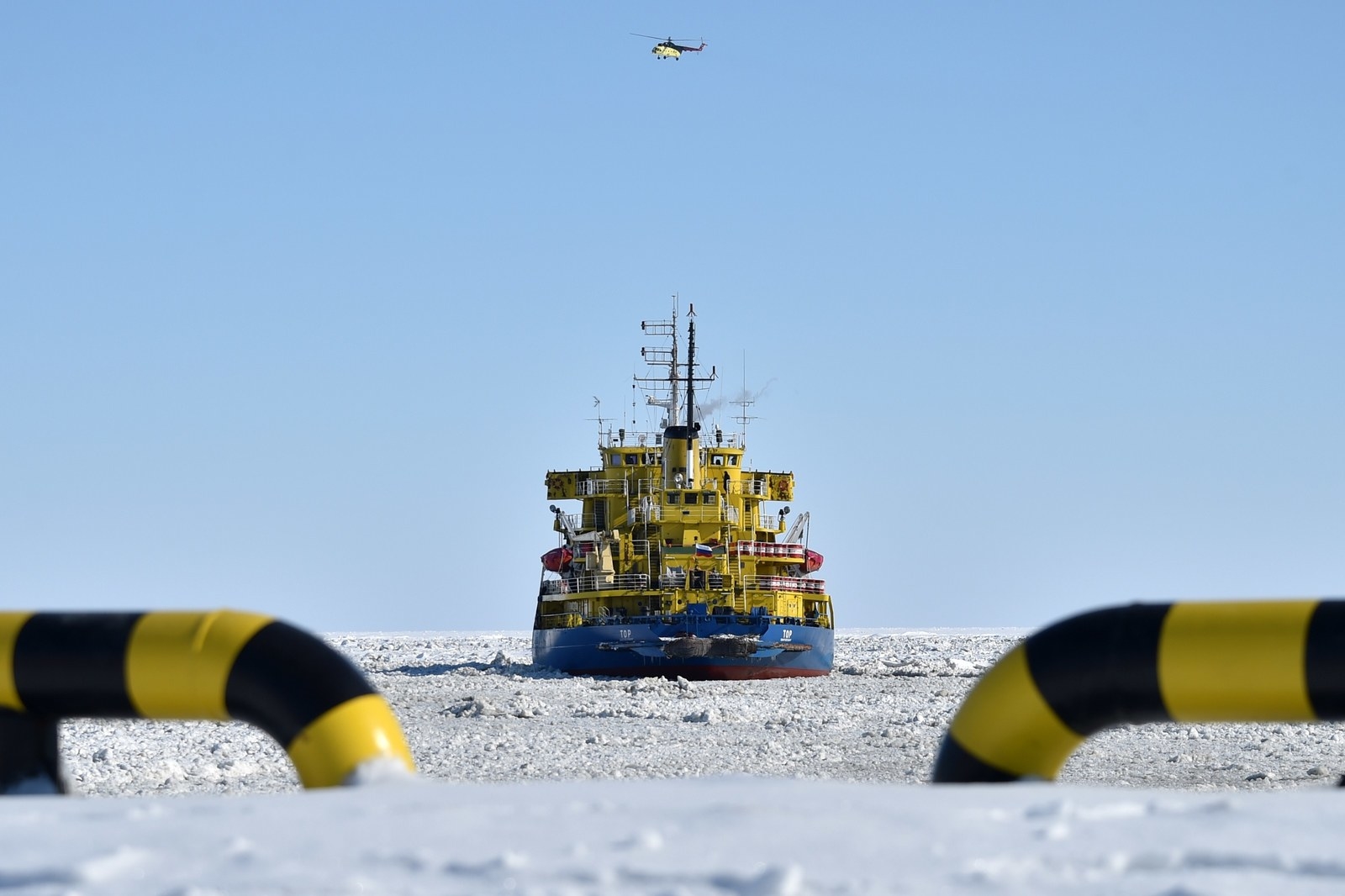
By the end of the century, oil tankers and cargo ships, with only the occasional help of icebreakers, will safely ply Russia’s Arctic coast for more than half the year if global warming continues unabated, a group of Russian scientists say.
The study, funded by the Russian government, was released by the journal Environmental Review Letters on Monday evening. It comes as a powerful North Atlantic storm is poised to smash into the Arctic Ocean for the third time this winter, perhaps pushing its temperatures above the freezing mark — also for the third time — in a year that has already set records for limited sea ice.
“Further warming in the Arctic will promote the Northern Sea Route (NSR) as an alternative to the conventional Suez or Panama Canal routes for intercontinental shipping,” wrote Vyacheslav Khon, a climate scientist at Kiel University, and his colleagues in the study.
"The study appears to be a sound analysis of the present and future navigability of the Northern Sea Route," geographer Scott Stephenson of the University of Connecticut, told BuzzFeed News.
Nathanael Melia, a climate scientist at the University of Reading, told BuzzFeed News that by the middle of the century, a shipping route that crosses directly over the poles will be favored over the Russian coastal one in the new study. During the height of the shipping season, he said by email, "this route is two days faster and potentially avoids Russian tariffs."
Melia also suggested that the coastal route might open later than the study anticipates, however, as ice will pile up in some straits even with increased melting. Russian icebreakers ended up stuck at such a pinch point in January, he noted.
This winter, Arctic sea ice has been absurdly low. According to the latest monthly report from the National Snow and Ice Data Center, only 4.67 million square miles of the Arctic Ocean was covered in ice in December 2016, the second-lowest total the center has even recorded for that month. October and November set all-time lows for those months.
And now, the National Weather Service projects a whopper of a North Atlantic storm will pack 90 mile-per-hour hurricane strength winds into the Arctic Ocean between Greenland and Iceland this week, breaking up even more sea ice.
Incredible satellite imagery of powerful hurricane force system churning in the central #Atlantic - ASCAT passes co… https://t.co/zE5D6Vvfn3
All of this renews focus on a long-standing Russian effort to open up the Arctic.
For centuries, Europeans explorers had sought (but mostly failed) to find the “Northwest Passage” between Asia and Europe through the Canadian Arctic. But those sailors would have had better luck if they tried the Russian side.
In an accident of geography, the Russian Arctic coastline is blemished with fewer islands than the North American side. That open ocean allows fewer thick chunks of ice from near the North Pole and more warm water from the south to accumulate along the Russian coast, causing the summer season of ice-free waterways to be longer in Russia than it is in Canada and Alaska.
That geographic edge has spurred investment from Russia, including the construction of a fleet of nuclear icebreakers and a $33 billion year-round Arctic seaport.
“Russia is the Arctic country that is investing to the greatest degree in their Arctic territory,” Scott Stephenson, an assistant professor of geography at the University of Connecticut, told BuzzFeed News. “Whereas there are no deepwater ports in the Canadian Arctic and very few settlements, at least by way of comparison there’s more infrastructure and more ports along the northern Russia coast.”
Among the economic activity already happening are nickel mines in the Russian interior shipping metal to world markets through the Arctic. Warming there portends more economic opportunities, according to the study.
"The Arctic is a region of exceptional importance for the Russian economy," Khon told BuzzFeed News.

But others in the Russian government do not expect its Arctic shipping lane, called the Northern Sea Route, to supplant lower-latitude waterways the shipping industry currently relies on.
“It is 100% sure that the Northern Sea Route is no alternative to the Suez Canal,” Viktor Olersky, Russia’s deputy minister of transport, said in 2013.
Instead, according to Olersky, the real prize and purpose of the Northern Sea Route is oil.
In 2011, ExxonMobil, in partnership with Russia’s state-owned Rosneft, announced the discovery of a sliver of the some 85 billion barrels of oil and oil equivalent that the two firms expect to find offshore in the Arctic. It would take decades to pump all that oil and gas — enough time for the loss of sea ice driven by climate change to make a dent in the economics of Arctic shipping. Ironically, burning all that Russian oil would add more greenhouse gases, which are largely responsible for the global warming that is melting the Arctic, to the atmosphere.
But as Exxon knows through the Exxon Valdez oil spill, in which the oil tanker veered off course into a rocky reef while trying to avoid small icebergs in Alaska’s Prince William Sound in 1989, the presence of even a little ice makes navigation treacherous.
“There’s no way that this means that Arctic navigation is going to be as safe as navigation elsewhere in the world at lower latitudes,” Stephenson said. “Even if the ice is receding, you’ll always have the possibility of smaller ice encounters.”
